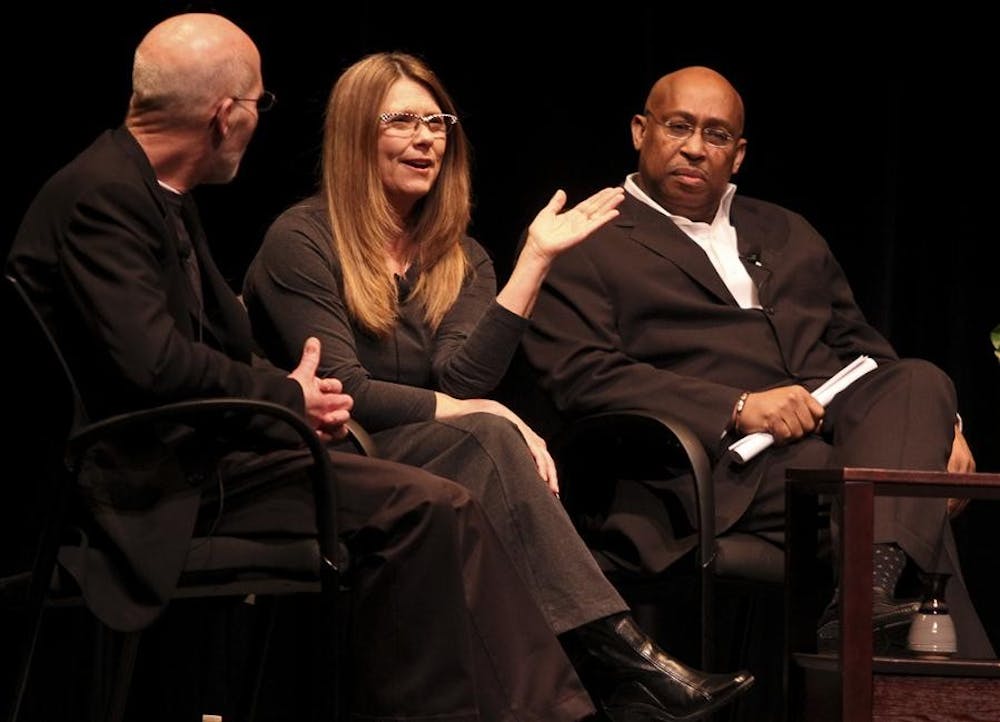The celebration of 100 years of journalism education brought a panel of three Pulitzer Prize-winning photojournalists to the Buskirk-Chumley Theater on Wednesday. The discussion, moderated by professor Jim Kelly and journalism student Olivia Corya, allowed Michel du Cille, Melissa Farlow and Bill Foley, all IU alumni, to share with the audience the difficulty in keeping emotional distance from their projects and how much risk is worth taking to tell the stories that need to be told through the images they take.
All three lecturers agreed that one of the most important duties of a photojournalist is to reveal the absolute truth of other people’s
reality.
“We’re photojournalists,” Foley said. “We tell stories on behalf of the survivors, but also of the dead. It’s an incredibly important job.”
Cille relayed this in exposing the mistreatment of war veterans who were stationed to hospital recovery. A picture appeared on the screen behind du Cille showing a veteran peeling back a strip of wallpaper in his room to reveal mold.
“Just walking into that room, the mold was overpowering,” du Cille said. “The vet turned to me and said, ‘This is what we heroes have to live with.’”
But Cille, who has won three Pulitzer Prizes, said revealing these social inadequacies is what the job is all about. The veterans’ hospitals caused uproar in Washington D.C., and they have since been cleaned and remodeled.
“I’ve always wanted and felt that journalism should have some kind of change,” du Cille said. “Pulitzer Prizes are great. I wouldn’t give them back, but I’m much more proud of the part that I can take in making a change somewhere.”
Melissa Farlow articulated how important it is that the subject of the photograph trusts the photographer as she shared her story of following female inmates to reveal their personal stories.
“It’s all about access and trust,” Farlow said. “Without trust, there is no access. And if I’ve learned anything in this job, it’s that I practice the opposite of celebrity journalism. I believe that the simplest people have the most interesting stories that are waiting to be told.”
The lecturers said emotional attachment is one of the biggest battles that a photojournalist must face when pursuing a difficult project.
Du Cille said he couldn’t stand watching a baby walk around with the same diaper on for more than 12 hours, so he went out and bought a pack of diapers and changed the baby himself.
“I made sure not to give the family money or anything so as not to get myself too involved, but at some point, you’re only human and you can’t help but do what you can to give them dignity,” du Cille said.
When it comes to the countless risks that photojournalists take throughout their assignments, Foley said the camera can take on an unprecedented role.
“The camera gives you the courage to do things you wouldn’t otherwise do,” Foley said.
Du Cille added that the photojournalist has no choice but to be brave when it comes to exposing social injustices.
“We get at the truth, and the camera is one of the best truths there is,” du Cille said. “But when you have it in your heart to give the subject dignity, you have to be courageous.”
Speakers capture life in pictures

Get stories like this in your inbox
Subscribe





